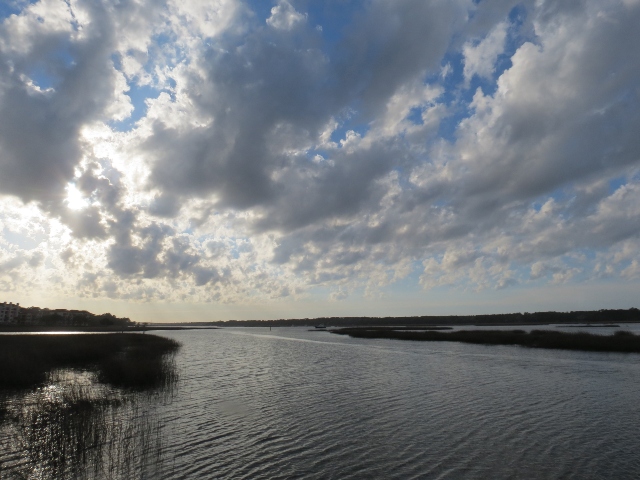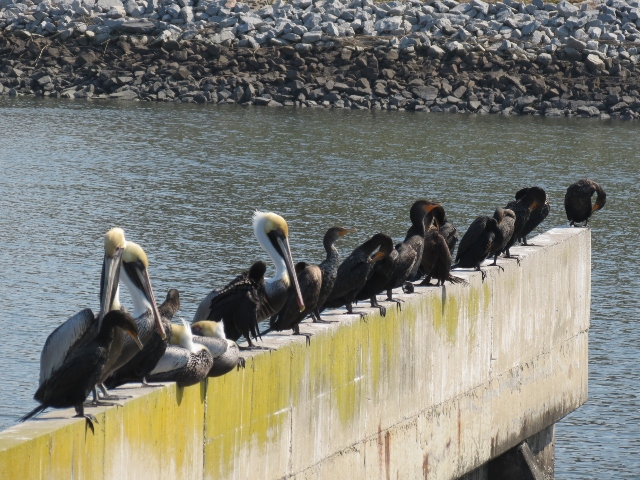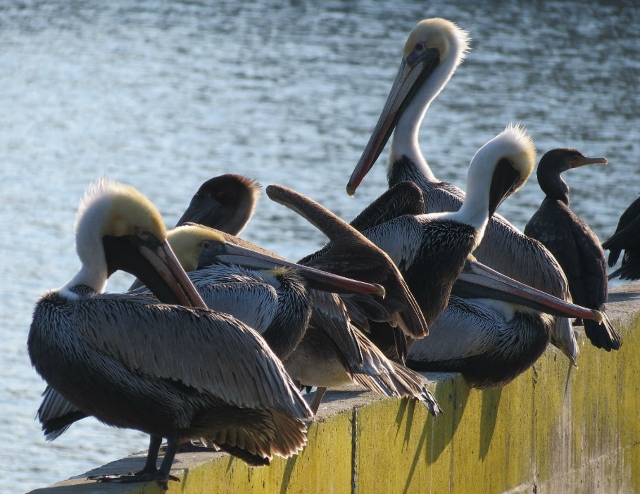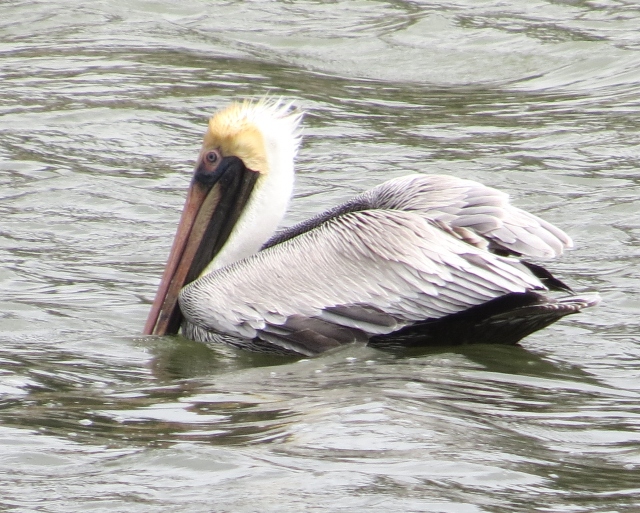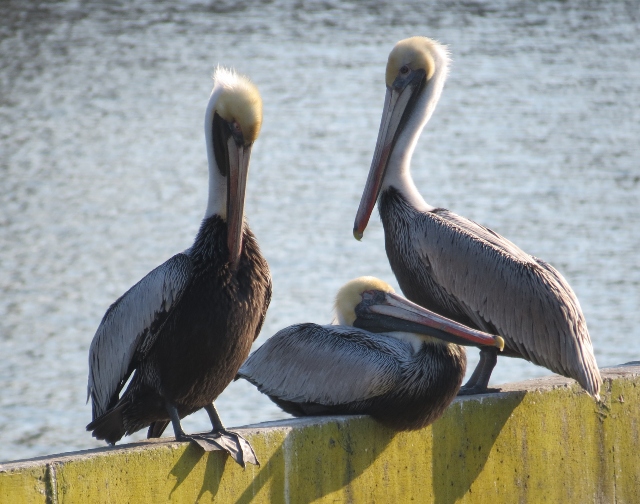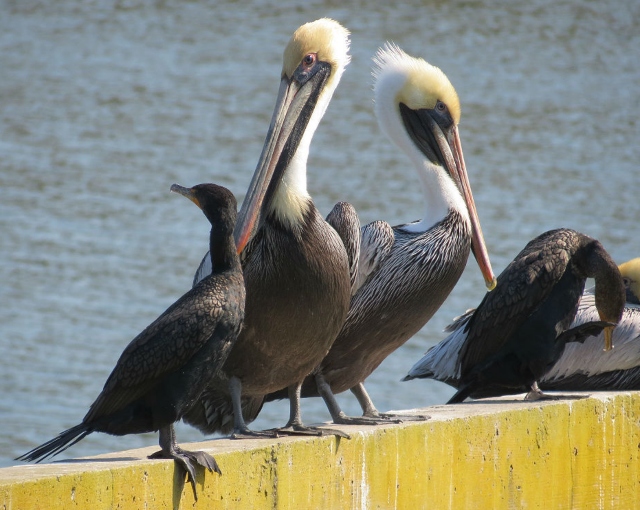While visiting South Carolina, I saw several examples of this comically elegant bird with an oversized bill. It is the smallest of the eight pelican species, but is often one of the larger seabirds seen in their range.
Brown Pelicans feed by plunge-diving from high up, using the force of impact to stun small fish before scooping them up. They are fairly common today — an excellent example of a species’ recovery from pesticide pollution that once placed them at the brink of extinction. These are a very gregarious birds; they live in flocks of both sexes throughout the year.
These birds incubate their eggs with the skin of their feet, essentially standing on the eggs to keep them warm. In the mid-twentieth century the pesticide DDT caused pelicans to lay thinner eggs that cracked under the weight of their incubating parents. After nearly disappearing from North America in the 1960s and 1970s, they made a full comeback thanks to pesticide regulations.
The Brown Pelican is found on the Atlantic Coast from New Jersey to the mouth of the Amazon River, and along the Pacific Coast from British Columbia to northern Chile, including the Galapagos Islands. It nests in colonies in secluded areas (often on islands), vegetated land among sand dunes, thickets of shrubs and trees and mangroves.
It mainly feeds on fish, but occasionally eats amphibians, crustaceans, and the eggs and nestlings of birds. Brown Pelicans residing in Southern California rely especially heavily on the Pacific Sardine as a major food source, which can compose up to a quarter of their diet. In level flight, they fly in groups with their heads held back on their shoulders and their bills resting on their folded necks.
The Brown Pelican the official state bird of Louisiana, appearing on the flag, seal and coat of arms.

